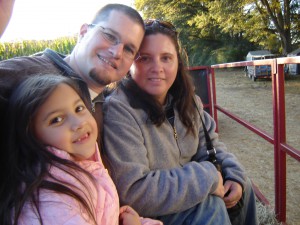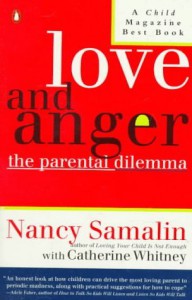Editor’s note: This post was originally published on Oct. 17, 2008, but offers a wonderful perspective from an Attachment Parenting father that can truly stand the test of time.
 One of the greatest gifts that a father can give to his children is to be present: to be here now, to be actively engaged in their lives.
One of the greatest gifts that a father can give to his children is to be present: to be here now, to be actively engaged in their lives.
Your presence as a father, as a man, is something completely different than what they experience from the mother as a woman, so make it special. Be present.
To be present, you have to mentally let go of all of the loose ends in your life. You have to let go of all of the things happening this afternoon, next week, this winter, 5 years from now. You have to let go of the past. Let go of everything from yesterday, from your work, from when you were a kid…
Sounds easy. It’s not.
Our minds are like monkeys, jumping from one thought to the next: I’m hungry. Wow, look at that sweet bike. I need some new socks. What time is the show? I sure could use some cash. Where’s that book I was reading? All of our wants and needs and disappointments and triumphs and losses and opinions are competing for space in our head.
Observe yourself. Get to know yourself. Maintain an awareness of the source of your thoughts and judgments. When you speak, ask yourself why you are speaking. When you eat, ask yourself where your food came from and why you are eating it. When making a choice, ask yourself why you decided the way that you did.
Chances are, you’ll learn an awful lot about yourself in a short time. Then you can begin to make different choices, consciously. Like the choice to be present with your child.
You can start by actively looking them in the eye when they are speaking to you, and by asking them what they think about things. Let them teach you about themselves by being an engaged listener and giving them your full attention. If you get down on their level with the Legos and let them lead, you’ll find that they are present. They are here now.
Makes you wish maybe you could be a kid again.
The next time they ask for something they don’t usually get, say “yes,” and enthusiastically involve yourself with them.
The Attachment Parenting father understands that most rules for kids are silly. So many times, “no” is the answer simply because it’s the usual answer, the regular answer, not because there is a valid reason for it. Kinda like “Because I said so.”
So surprise them. Surprise yourself. Be impulsive and irrational because you can, because it doesn’t matter what you did in the past.
This is now.
Go for it.
It’s all you’ve got.
“In dwelling, live close to the ground.
In thinking, keep to the simple.
In conflict, be fair and generous.
In governing, don’t try to control.
In work, do what you enjoy.
In family life, be completely present.”
-from the Tao Te Ching, Stephen Mitchell translation











